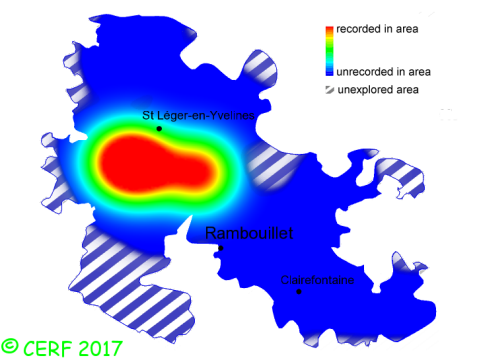|
Entoloma cetratum (Fr.) Moser
|
common name(s) : Honey Pinkgill, Ocelot Entoloma
New classification: Basidiomycota/Agaricomycotina/Agaricomycetes/Agaricomycetidae/Agaricales/Entolomataceae
Former classification: Basidiomycota/Homobasidiomycetes/Agaricomycetideae/Pluteales/Entolomataceae
synonyms: Rhodophyllus cetratus, Nolanea cetrata
edibility : inedible
|
|
|
The cap is brown to ochre.
The cap surface is smooth, not viscid nor sticky.
The stem is ochre-brown, without ring.
The flesh is unchanging; its taste is mealy or not distinctive; the odour is not distinctive;
its texture is fibrous.
The gills are rather distant .
The spore print is pink. This species is saprophytic.
It grows on the ground, on a rather non calcareous soil, with spruce, pine.
The fruiting period takes place from June to November.
| Dimensions: | width of cap approximately 2.5 cm (between 0.5 and 5 cm) |
| | height of stem approximately 6 cm (between 2 and 10 cm) |
| | thickness of stem (at largest section) approximately 4 mm (between 1 and 5 mm) |
Chemical tests : none.
Distinctive features : honey-brown waxy cap with clearly striate margin, and with eyelike spot in the centre; mycena-looking; with conifers
Entoloma cetratum is rare and localised in the forest of Rambouillet, and is occasional, more generally speaking
.
|  | | Above : distribution map of Entoloma cetratum in the forest of Rambouillet |
|
page updated on 14/01/18